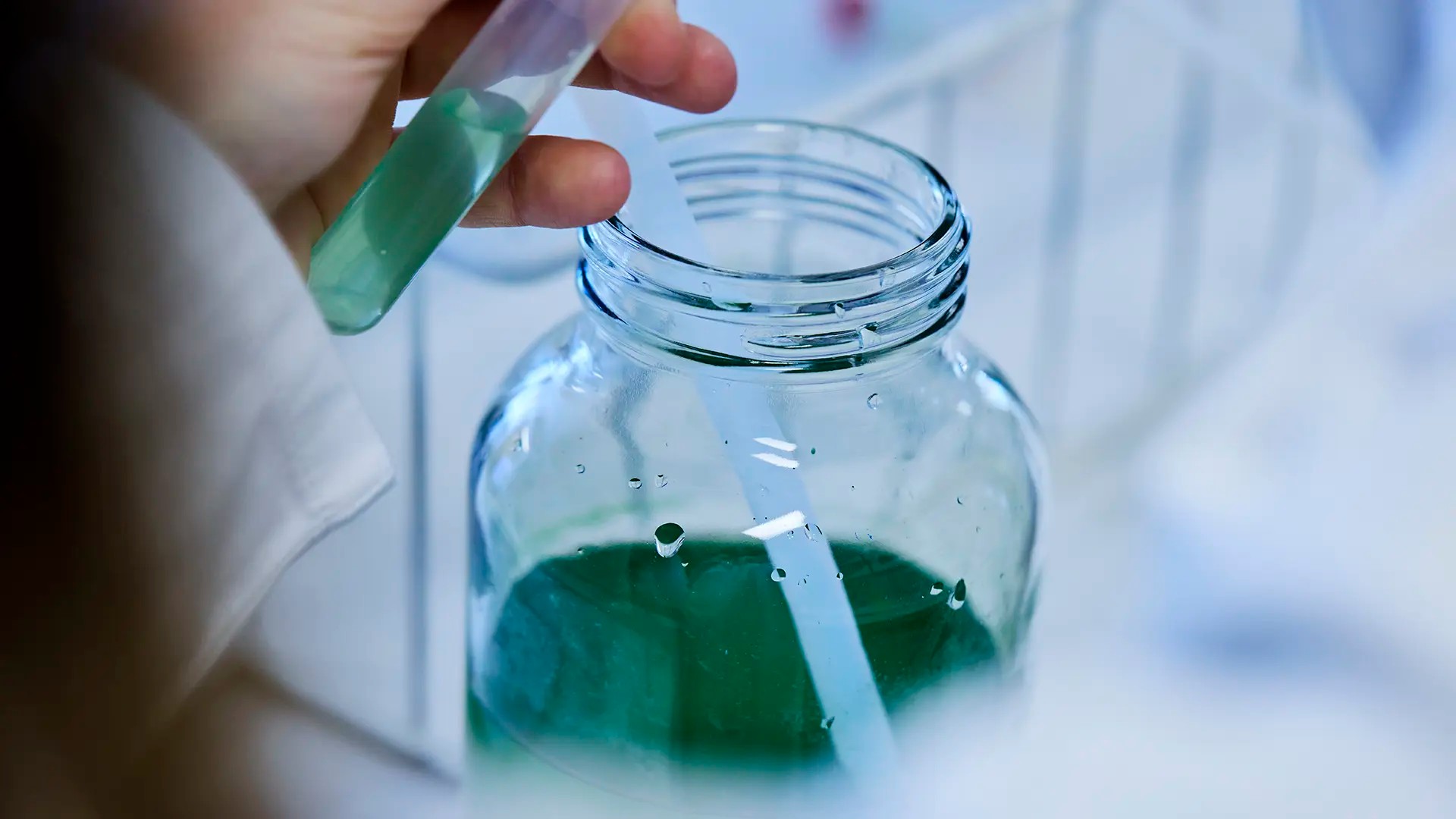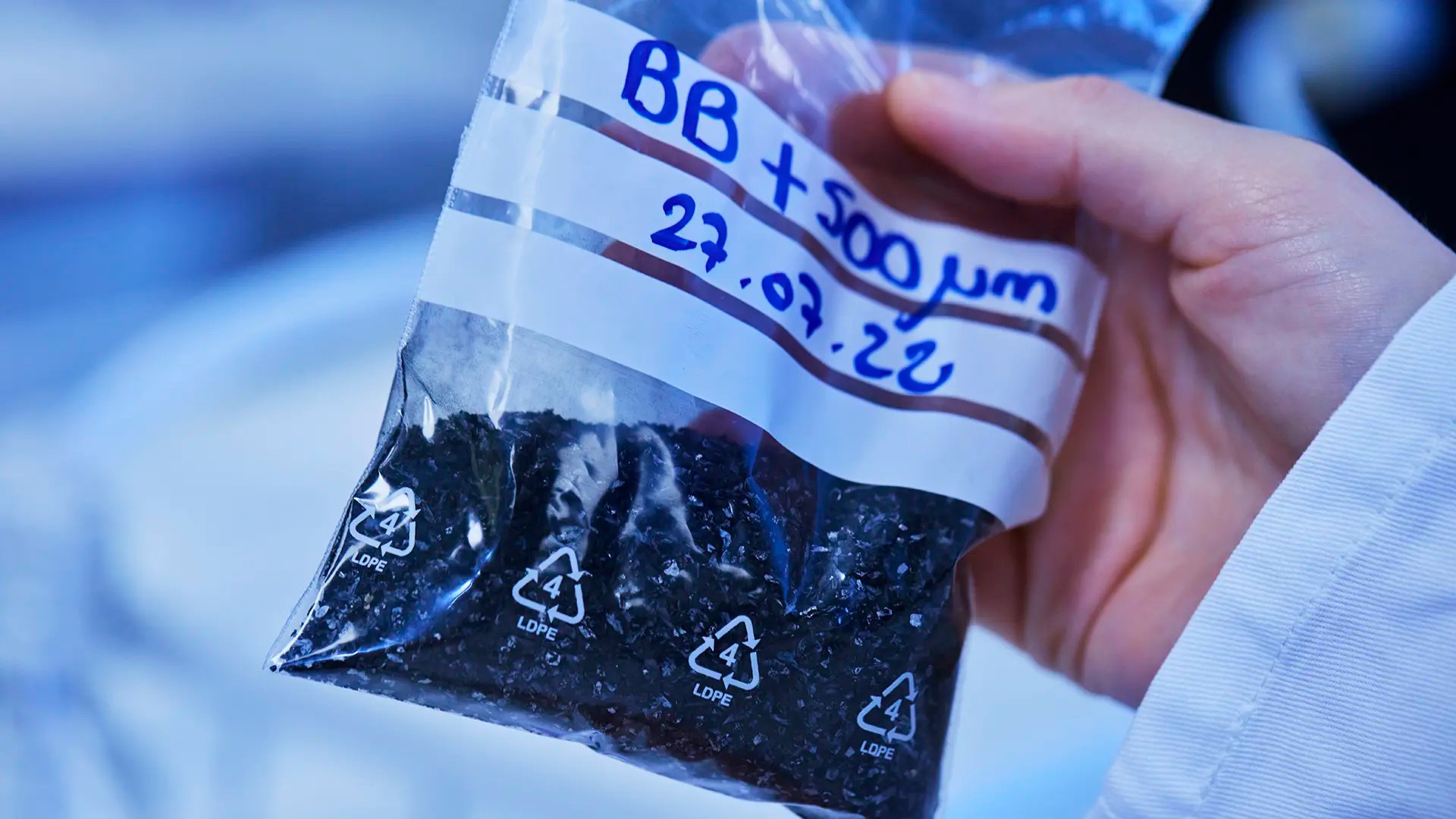


Royal Swedish Academy of Engineering Sciences (IVA's) annual 100 list highlights current research with the potential to create value through commercialisation, business and method development or societal impact. Two research projects from the Department of Chemistry and Chemical Engineering are highlighted on this year's list. Both aim to develop smarter and greener recycling processes and to recover valuable resources and turning waste into benefits for the environment, society and industry.
There is also a cooperation between researchers from the department, Lund university, Johns Hopkins University and three more projects with researchers from the department involved, on IVA 100 list 2024 (see more below).

Photographer: Anna-Lena Lundqvist
Metals from the waste back to the batteries via green chemical approach
Spent Li-ion batteries contain valuable metals such as lithium, cobalt, manganese, nickel, aluminium and copper. Some of these metals are not mined in EU and we depend on their import. Thus, we are obligated to recover them from the waste via sustainable recycling. Traditional recycling of batteries uses strong chemicals and generates secondary waste. Moreover, some portions of valuable metals are lost in the different steps and are never recovered.

Photographer: Henrik Sandsjö
Our technology makes recycling smarter and greener since we use organic chemicals. With a use of organic acid we recover most of the lithium and aluminum. Their separation is after that very easy and both metals can be reused. Aluminum is very often recovered as the by-product and never used again. Our technology keeps battery metals (cobalt, nickel and manganese) together and new cathodes will be produced once the research is finalized. We are also investigating methods to regenerate the chemicals to be able to use them again.
Responsible for the project: Martina Petranikova, Léa Rouquette, Nathália Vieceli

Photographer: Sandra Nayeri
Water purification and hydrogen gas from recycled grinding sludge
Thousands of tons of grinding sludge from the steel and manufacturing industries are incinerated and landfilled annually in Sweden. This is not only resulting in significant energy and material losses but also leads to increasing economic costs for waste management in relation to our transition to a sustainable society. With our unique recycling method based on hydrometallurgy, we can recycle 80% of grinding sludge from steel processing by producing ferric chloride for water purification and hydrogen that contributes to green energy. Offering an economical alternative to landfilling benefits both the environment and can contribute to solve a societal problem, while also strengthening Swedish competitiveness. The goal is to be able to offer a long-term solution for waste from steel production in the future and to replace today’s ore-based ferric chloride. In demonstration trials with SKF and Scania, we have shown that ferric chloride from grinding sludge meets purity requirements and is suitable for wastewater treatment.”
Responsible for the project: Thomas Ottink and Martina Petranikova
More projects related to the department
Cooperation between researchers from the department and Lund university, Johns Hopkins University
“Från hår till hälsa – enkelt test visar cancern tidigt”
Researcher from the department: Per Malmberg
Projects originated at the department
”Icke-invasiv utandningsmätare för glukosövervakning med ett enda andetag”
Researcher from the department: Martin Andersson
“Koldioxidinfångning utan dyr och energikrävande gasseparation”
Researcher from the department: Henrik Leion
“KORALL - En ny metod för koldioxidinfångning”
Researcher from the department: Diana Bernin